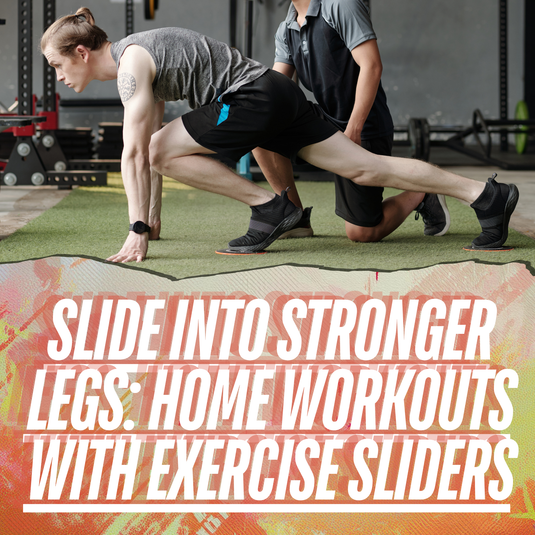At-Home Resistance Band Back Exercises

⏱️ Estimated Read Time: 6 minutes
🧠 TL;DR
- At-Home Resistance Band Back Exercises offers effective, accessible movements for targeted results.
- This guide is designed to help you move smarter, build strength, and stay consistent.
✍️ Summary
This post explores at-home resistance band back exercises in a way that’s actionable and easy to follow. Whether you're new to this style of training or leveling up, it includes practical takeaways for your routine.
📚 Table of Contents
A resilient and powerful back is a cornerstone of overall fitness, contributing to posture, strength, and functional movement. This comprehensive guide delves into the world of resistance bands and how they can be instrumental in crafting a robust back. Like dumbbells, barbells, and kettlebells, resistance bands offer a versatile and accessible way to target various back muscles, fostering strength and stability.
The Power of Resistance Bands for Back Workouts
Resistance bands are flexible rubber pieces and powerful tools for building strength. According to a study published in the Journal of Sports Science & Medicine, incorporating resistance bands into a workout routine can significantly improve muscle strength and endurance. Their unique ability to provide variable resistance throughout the entire range of motion makes them particularly effective for resistance band back exercises at home.
Unlike traditional weights, resistance bands create constant tension on the muscles, engaging them both concentrically and eccentrically. This continuous tension has been shown to enhance muscle activation, promoting hypertrophy and functional strength.
To get started with resistance bands, consider exploring the range available at Living. Fit, including options like Resistance Bands For Pull Up Assistance.

Understanding Back Muscles Anatomy
Before we embark on the journey of kettlebell back exercises, let's explore the intricate anatomy of the back. The major muscle groups include the latissimus dorsi (lats), rhomboids, traps, erector spinae, and more. Balanced development of these muscles is aesthetically pleasing and essential for maintaining proper posture and supporting daily movements.
- Latissimus Dorsi (Lats): The lats are large, fan-shaped muscles that drive movements like pulling and help with shoulder extension, adduction, and medial rotation.
- Rhomboids: Located between the shoulder blades, rhomboids support scapulae retraction, which is crucial for maintaining proper posture.
- Trapezius: The trapezius is an extensive muscle supporting the upper spine and assisting in various shoulder movements, contributing to shoulder stability.
- Erector Spinae: Running along the spine, erector spinae muscles play a crucial role in spinal extension, impacting upright posture. These muscles are often targeted in lower back stretches and strengthening exercises.
- Terres Major and Minor, Infraspinatus, Supraspinatus: These muscles assist in shoulder movement and stability, contributing to overall shoulder joint health.
Understanding these muscles provides insight into their specific functions, aiding in targeted workouts and overall back health.

Back Muscles Targeted by Resistance Bands
Understanding the back muscles targeted during resistance band exercises is crucial for a well-rounded workout. The latissimus dorsi, rhomboids, and trapezius and are primary muscles worked during various back exercises. A European Journal of Applied Physiology study emphasizes the importance of targeting these muscles for overall back strength and function.
Resistance bands effectively engage these muscles with their ability to mimic natural movements. For instance, a Lat Pulldown with Resistance Bands activates the latissimus dorsi and engages the supporting muscles around the shoulder blades, promoting comprehensive back development. These resistance band back exercises at home are ideal for those looking to enhance their strength without needing a gym.
Top 15 Resistance Band Back Exercises
Building a more muscular back is not only about aesthetics but is crucial for overall strength and posture. Incorporating resistance bands into your workout routine can target specific muscle groups effectively. Here are the top 15 resistance band back exercises at home, each tailored to address different aspects of back strength and functionality. These exercises include a variety of back exercises using resistance bands, perfect for those working out at home.
Bent-Over Row (Best for Upper Back)
Benefits: Targets the upper back, specifically the latissimus dorsi and rhomboids. It helps improve upper back definition and strength.
How to do Bent-Over Row: Secure the resistance band under your feet and bend at the hips. Keep your back straight and pull the band towards your lower chest, squeezing your shoulder blades together.
Want to Try Resistance Band Workouts That Burn Fat and Gain Muscle? Get Access to 7 Different Resistance Band Workouts + Create Your Own With a Workout Generator! Follow on desktop or mobile!
Superman (Best for Lower Back)
Benefits: Strengthens the lower back muscles, including the erector spinae—aids in improving lower back stability. This exercise is an excellent addition to your routine of lower back stretches and strengthening exercises, which are essential for a well-rounded fitness plan.
How to do Superman: Lie face down and anchor the band to a sturdy object. Extend your arms forward and lift your chest and legs simultaneously, engaging your lower back muscles.
Seated Row (Best for Middle Back)
Benefits: Targets the middle back, emphasizing the rhomboids and lats, and enhances mid-back strength and stability.
How to do Seated Row
Sit with extended legs, loop the band around your feet, and pull the handles towards your chest, retracting your shoulder blades.
Face Pull (Best for TRX)
Benefits: Focuses on the rear deltoids and upper traps. Improves shoulder stability and overall upper back development.
How to do Face Pull
Attach the band at face height, grab the ends, and pull towards your face, keeping your elbows high.
Deadlift (Best for Building Muscle)
Benefits: Engages the entire back, including the lower and upper muscles. Effective for overall muscle development.
How to do Deadlift
Stand on the band, hinge at the hips, and lift, keeping the back straight, targeting the hamstrings and back muscles.
Reverse Fly (Best for Improving Posture)
Benefits: Targets the rear deltoids and upper traps. Strengthens the muscles responsible for pulling the shoulders back. This is one of the effective back exercises to strengthen upper back muscles.
How to Reverse Fly
Stand on the band, bend at the hips, and lift your arms to the sides, squeezing your shoulder blades.
Pull-Up (Best for Burning Back Fat)
Benefits: Engages the entire back, especially the lats. Effective for burning calories and reducing overall body fat.
How to do Pull-Up
Attach the band to a high anchor point, grab the handles, and perform pull-ups, engaging your back muscles.
Standing Ys (Best for Beginners)
Benefits: Engages the upper back and shoulders—a beginner-friendly exercise to improve overall back strength.
How to do Standing Ys
Secure the band under your feet, and lift the handles in a Y-shape, targeting the upper back muscles.
Single Arm Row (Best for the Whole Back)
Benefits: Targets the entire back, emphasizing the lats and rhomboids, and promotes balanced muscle development.
How to do Single Arm Row
Secure the band under one foot and pull the handle towards your hip, engaging the back muscles.
Want to Try Resistance Band Workouts That Burn Fat and Gain Muscle? Get Access to 7 Different Resistance Band Workouts + Create Your Own With a Workout Generator! Follow on desktop or mobile!
Pull Apart (Best for Shoulder Alignment)
Benefits: Focuses on the rear deltoids and trapezius—aids in correcting shoulder alignment and improving posture.
How to do Pull Apart
Hold the band in front of you with arms extended and pull it apart, focusing on squeezing your shoulder blades.
Bird Dog (Best for Back Pain Relief)
Benefits: Engages the entire back, promoting spinal stability. Effective for relieving lower back pain.
How to do Bird Dog
Get on all fours, loop the band around one foot and the opposite hand, and extend the arm and leg, maintaining a straight line.
Lying Pullover (Best for Lying Down)
Benefits: Targets the lats and upper back. Effective for overall muscle engagement while lying down.
How to do Lying Pullover
Lie on your back, secure the band around a stable object, and pull the handles overhead, engaging your back muscles.
Lat Pulldown (Best for Your Lats)
Benefits: Isolates the latissimus dorsi. Effective for building width in the upper back.
How to do Lat Pulldown
Secure the band overhead, kneel or sit, and pull the handles towards your chest, engaging your lats.
Glute Bridge (Best for Stretching)
Benefits: Stretches the entire back, especially the lower back. Promotes flexibility and relieves tension.
How to do Glute Bridge
Lie on your back, loop the band around your thighs, and lift your hips towards the ceiling, stretching your back muscles.
Incorporate these exercises into your resistance band workout routine for a well-rounded and effective back training session. Adjust the band tension and repetitions based on your fitness level and goals. Remember to maintain proper form to maximize the benefits and minimize the risk of injury.
Expert Insights on Resistance Band Training
Fitness experts, including Aaron Guyett, CSCS, Director of Education for Living.Fit emphasizes the effectiveness of resistance bands in back training. According to Guyett, resistance bands provide a unique form of resistance that challenges the muscles throughout the entire range of motion, promoting balanced muscle development.
"The versatility of resistance bands allows users to target specific muscle groups precisely," says Guyett. He recommends incorporating resistance band exercises into a well-rounded workout routine for comprehensive back development.
Tailoring Your Back Workout with Resistance Bands
Customizing your resistance band back workout involves considering your fitness goals. If your aim is strength, choose bands with higher resistance and perform exercises in the 8-12 rep range. For endurance, opt for lower resistance bands with higher rep ranges.
Selecting suitable resistance bands is crucial. Mini Bands are excellent for warm-ups and targeted muscle activation, while Resistance Bands with Handles offer versatility for various exercises.
Resistance Band Back Workout Plans

Here are sample resistance band back workout plans for different fitness levels:
Beginner
Lat Pulldown - 3 sets x 12 reps
Band Pull-Aparts - 2 sets x 15 reps
Seated Row - 3 sets x 10 reps
Intermediate
Face Pulls - 3 sets x 15 reps
Lat Pulldown - 4 sets x 12 reps
Band Pull-Aparts - 3 sets x 15 reps
Advanced
Lat Pulldown - 4 sets x 12 reps
Seated Row - 4 sets x 10 reps
Dumbbell Alternating Cleans with Resistance Bands - 3 sets x 15 reps
Remember to incorporate warm-up and cool-down exercises for a well-rounded routine.
Scientific Progression and Variation in Back Workouts
Achieving a stronger and more defined back isn't just about the exercises you choose; it's also about the strategic progression and thoughtful variation in your workout routine. To ensure continued muscle development, it's crucial to understand the principles of scientific progression.
Begin by incorporating resistance bands with a resistance level suitable for your current strength. Over time, as your back muscles adapt, the resistance to continually challenge them gradually increases. This gradual progression, known as progressive overload, stimulates muscle growth by subjecting the muscles to rising resistance levels, promoting strength gains.
Furthermore, introducing variations to your back exercises is pivotal in preventing workout plateaus and addressing different fitness levels. Each resistance band exercise can be modified to cater to beginners, intermediate, and advanced individuals.
For instance, altering the grip or stance during a bent-over row or adjusting the anchor point for a lat pulldown can provide the necessary variation. These modifications keep your workouts engaging and target your muscles from different angles, promoting a more comprehensive and balanced development. Scientifically, varied stimuli lead to a more robust neuromuscular adaptation, ensuring that your back muscles continuously face new challenges for optimal growth and strength improvement.
Want to Try Resistance Band Workouts That Burn Fat and Gain Muscle? Get Access to 7 Different Resistance Band Workouts + Create Your Own With a Workout Generator! Follow on desktop or mobile!
Safety Tips and Guidelines for Effective Resistance Band Workouts
Resistance band workouts offer versatile and accessible strength training, but ensuring your safety during these exercises is paramount, particularly for beginners. Here are essential safety tips and guidelines to follow for a safe and effective resistance band workout:
- Before diving into any resistance band exercise, prioritize understanding and maintaining proper form. Proper form maximizes the workout's effectiveness and significantly reduces the risk of injuries.
- If you're new to resistance band training, begin with a lower resistance level, allowing your muscles to adapt gradually and reducing the likelihood of straining or overloading them, especially if you're unfamiliar with the specific demands of resistance bands.
- As your strength improves, resist the temptation to jump to higher resistance levels too quickly. Gradual progression is essential for building strength safely. Aim for incremental increases in resistance, ensuring that your muscles are adequately challenged without compromising your form.
- One of the most critical aspects of resistance band safety is anchoring the bands securely. Improper anchoring can lead to unexpected releases, potentially causing injuries. Anchor the bands to a stable and fixed point, ensuring they won't slip or lose during your workout.
- Regular maintenance of your resistance bands is essential for safety. Inspect them for any signs of wear, tear, or damage before each workout. If you notice any issues, replace the band immediately to avoid unexpected breakage during exercise.
- Many resistance band injuries occur due to improper use of attachments. Ensure you're using the appropriate handles, cuffs, or anchors based on your exercise. Using the wrong attachment may compromise your grip or stability.
- Pay attention to how your body responds during resistance band workouts, and stop if you experience pain or discomfort beyond the typical muscle fatigue associated with exercise. Pushing through pain can lead to injuries and setbacks in your fitness journey.
- Begin each resistance band workout with a thorough warm-up to prepare your muscles for the upcoming activity. Similarly, conclude your session with a proper cool-down to aid muscle recovery and flexibility. These sessions can include back exercises with stretch bands to enhance flexibility.
- Hydration is often overlooked but plays a crucial role in muscle function and overall well-being. Ensure you're adequately hydrated before, during, and after your resistance band workouts.
- Consult a fitness professional or physical therapist to clarify your form, resistance levels, or specific exercises. They can provide personalized guidance to ensure you use resistance bands safely and effectively.
By adhering to these safety tips and guidelines, you can enjoy the benefits of resistance band workouts while minimizing the risk of injuries. Remember, your safety is the foundation of a successful and sustainable fitness journey.
Conclusion
Incorporating resistance bands into your fitness journey proves transformative, as supported by research in the Journal of Sports Science & Medicine. Their unique ability to provide variable resistance throughout the entire range of motion distinguishes them, fostering muscle activation and functional strength and exploring Living.Fit's range, crafted for pull-up assistance, powerlifting, warm-up, and stretching, sets the stage for a fortified back.
Understanding the nuanced anatomy of the back and engaging primary muscles—latissimus dorsi, rhomboids, and trapezius—reveals the comprehensive impact of resistance bands. Top 15 resistance band back exercises, endorsed by fitness experts like Aaron Guyett, CSCS, target diverse facets of back strength. Customizing workouts involves strategic planning, while safety tips emphasize proper form, gradual progression, secure anchoring, and regular band inspection.
Building a more muscular back with resistance bands is a holistic commitment to well-being, empowering individuals to embrace the resilience of these bands for a robust fitness journey.
Want more guidance? Check out our Weekly Dumbbell Workout #1.
📝 FAQs
How often should I do these exercises? +
2–3 times per week is a good starting point for most people.
Do I need equipment? +
Many of these can be done with just your bodyweight or a single kettlebell or dumbbell.
Can beginners do these routines? +
Yes! These movements are designed to scale with your fitness level.









Excellent write up and videos.